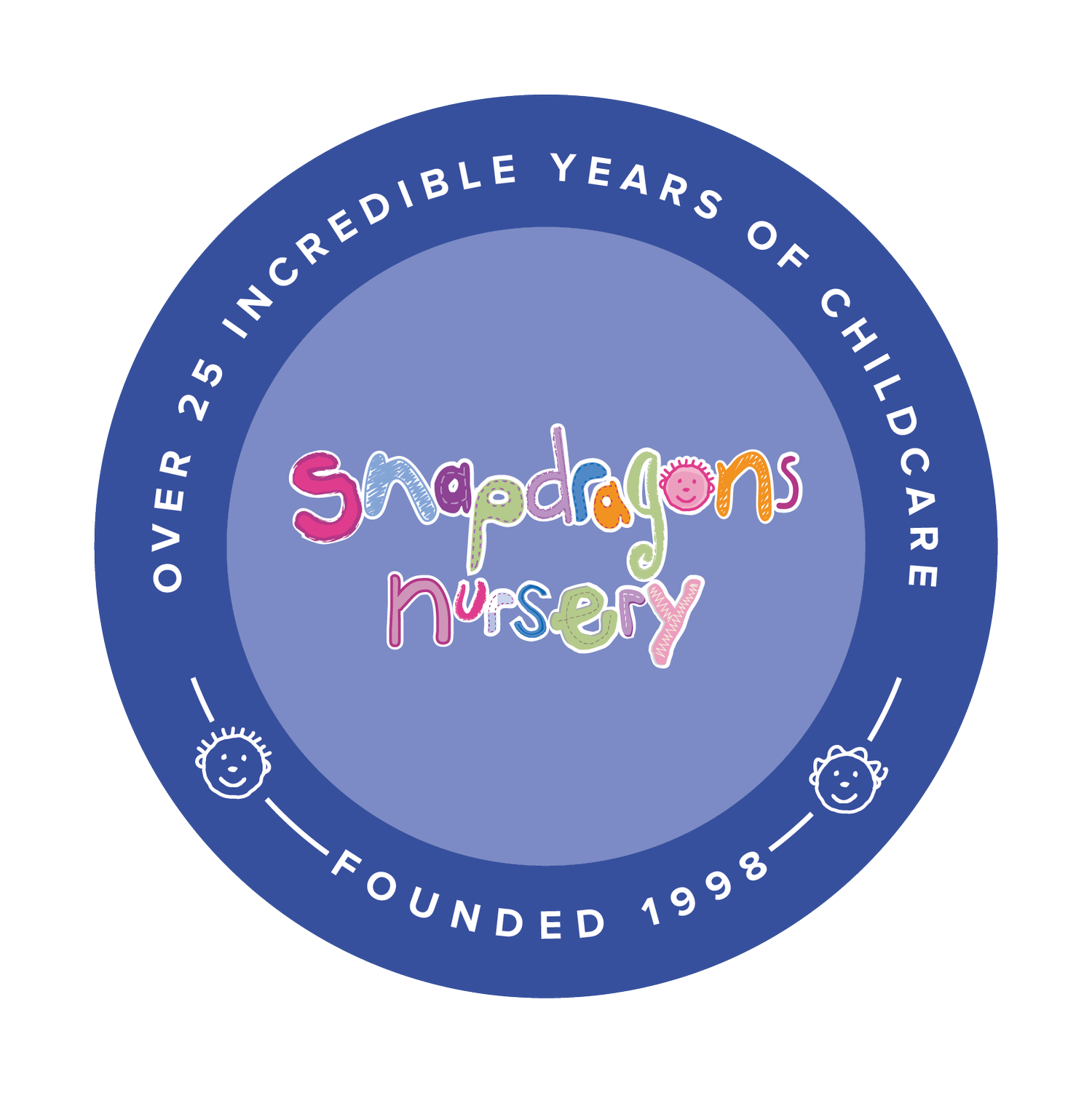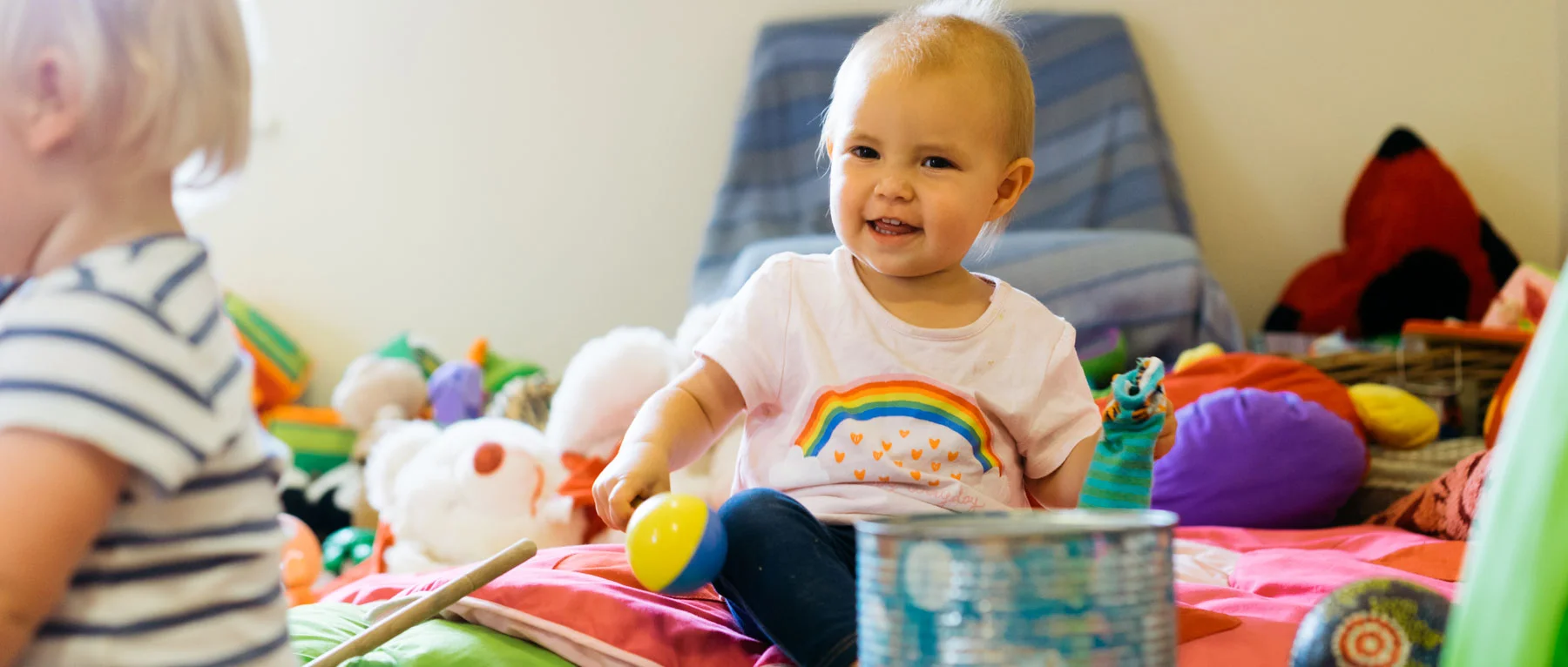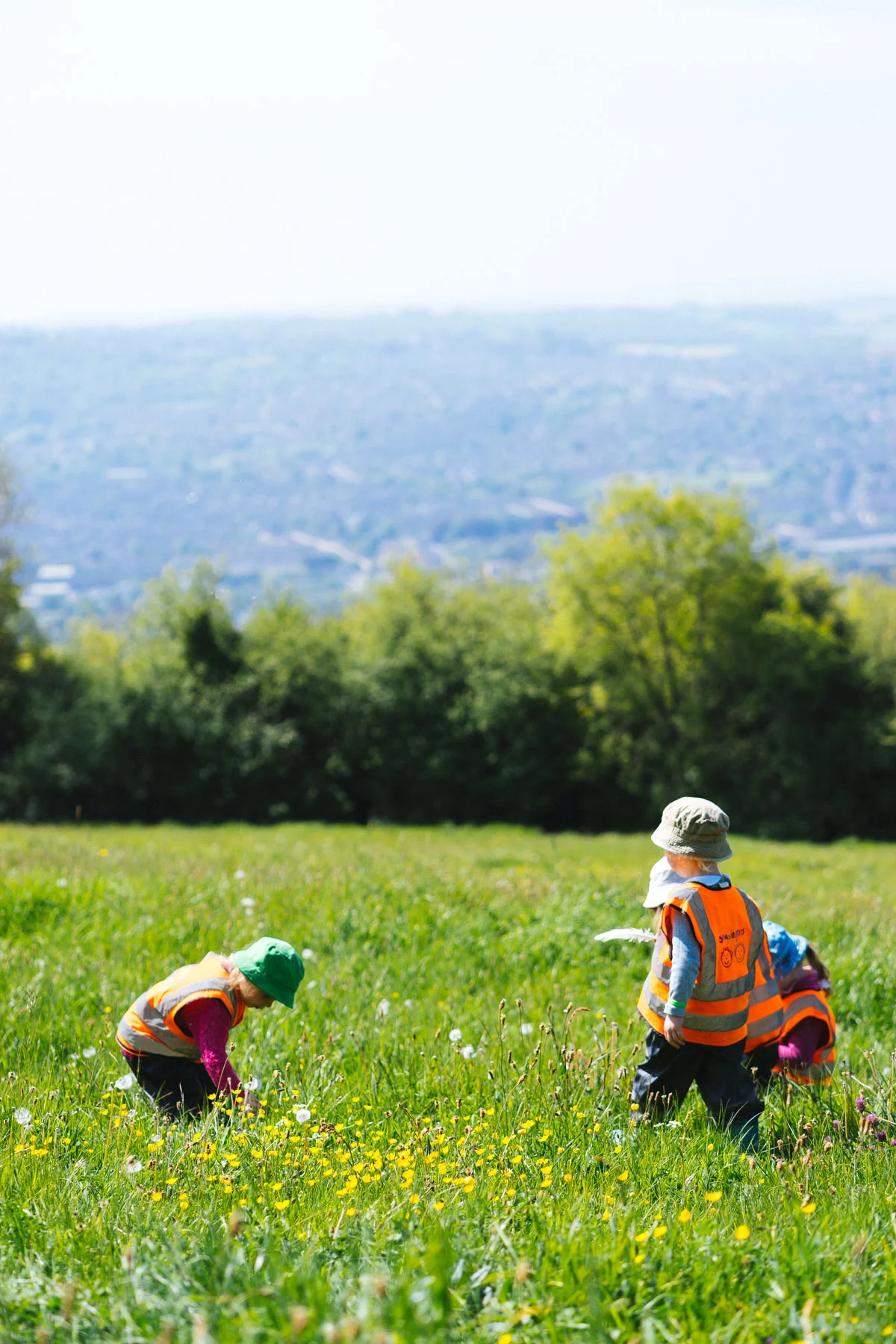
“Fee Fie Fo Fum!” - Traditional Tales at Snapdragons
Each month we focus on a well loved story as we believe that storytelling and a love of books are vital in providing a firm foundation for our children’s communication and language development, and readiness for reading and writing.
The stories we have chosen include modern favourites such as The Very Hungry Caterpillar, Peace At Last and We’re Going on a Bear Hunt. We also like to focus on those enduring classic folk tales which we all remember from our childhood such as; The Three Little Pigs, The Three Billy Goats Gruff, and Little Red Riding Hood.
Our planning incorporates the story of the month, and many fun activities grow from the ideas sparked by the children’s interest and enjoyment in the story’s characters and events. Our children are currently exploring ideas surrounding “Jack and The Beanstalk” with cries of “Fee Fie Fo Fum!” resounding from every corner of our nurseries!
Activities include exploring the variety of different leaves in the local environment and using their creative skills to make leafy Beanstalks of their own. Beans have been planted in clear bags so the growth of shoots and roots can be observed. Story maps full of imaginative ideas have been plotted using drawing, early writing and mark making. Alternative versions of the story are being shared so the perspective of the Giant is considered and different feelings explored. Role play corners have giant sized tables, bowls and plates fit for a Giant. Construction areas are busy building castles, and magic beanstalks have sprouted and grown up through the ceiling in many of our playrooms!
Like so many of the traditional tales, the story of Jack and The Beanstalk has been passed down through the generations, surviving through storytelling. Jack and the Beanstalk was recorded as “The Story of Jack Spriggins and the Enchanted Bean” and “Jack The Giant Killer” in the 17th and 18th century. However, research has now revealed that this story and other folk tales actually have much earlier origins than previously thought. Many have been traced back to more than 5,000 years ago!
The Giant has gone by many names over the years, including “Blunderbore”and “Gogmagog”, but his familiar cry of “Fee, Fie, Fo, Fum! I smell the blood of an English man” remains. This seemingly nonsense phrase is thought to be Gaelic in origin and has a meaning of disapproval and anger. “Fie, foh and fum, I smell the blood of a British man” features in Shakespeare’s King Lear.
Whatever the origin, it is repeated phrases such as this that enable children to remember and join in with the story with enjoyment. We like getting the children actively involved, getting up and becoming the characters, stomping like the giant or climbing the beanstalk as Jack. So with each of our traditional tales we encourage not only sharing the book of the story, but telling the story ourselves, carrying on this age old tradition, and hopefully our children will pass this down to their little ones one day too!
What's the point of nursery rhymes?
Who cares if Humpty was put together again and does it really matter if Little Bo Peep lost her sheep?
Research says it does. 'Nursery rhymes and rhyming games are an ubiquitous part of childhood" (Opie and Opie 1987).
Daily singing and action nursery rhymes are proven to help your child's development of language, communication, literacy, mathematical and social skills
When you have your first born, you excitedly start to sing nursery rhymes that you learnt as a child, the start of the melody is like a little key inside your head that unlocks the rest. But as you sing it for 97th time that day, you tire. This raises the question, just how important are they? The fact that you remember them indicates that we store them and relate to them when we need to.
The repetition of the rhyme helps your baby / child with phonological skills, your child's ability to recognise the sounds and syllables that make up language. For some children this will happen without much effort, it just happens naturally, but for some this has to be a learnt process. They help with listening skills, learning about emotions and social skills.
Rhymes and rhymes with actions will further support this. Your child learns rhyme production, detection and oddity. They will be able to add words and recognise patterns in words. Children enjoy singing them. In nursery it's a social experience as we learn something with our friends and it's a familiar link between home and nursery.
Speech and language improves with nursery rhymes - the range and tone of words, can all be picked up from nursery rhymes. Children who know their nursery rhymes are better equipped to be more confident readers and to develop mathematical skills from counting rhymes to size concepts.
It can be an activity that spans the generations: grandparents and grandchildren can enjoy them together and compare the changes to the traditional rhymes, e.g. Twinkle Twinkle Little Star to Twinkle Twinkle Chocolate Bar.
Most of all they are fun! Singing nursery rhymes together relaxes you and your baby and baby is learning from the visual and oral experience at the same time as building and strengthening your relationship.
So it seems it is important to know that Humpty did fall and couldn't be put back together again.
When nothing is more than enough
Before heading out on any Forest School trip I look around my workshop and think "what will I need?" I have planned activities which require certain items but I also have my continuous provision which can be brought out to facilitate a range of interests shown by the children.
There's normally string, cord, scissors, knives, collecting pots, binoculars, magnifying glasses, cloth, paper and crayons ready for when a child shows an interest so that I can help them develop their ideas and engage with their interests.
Just before a walk through Primrose Hill Community Woodland recently with preschool children from Grosvenor I was looking around but instead of packing my usual pieces I thought "Let's see what happens when I take nothing", no extra items, no forest school backpack, no extra weight apart from the grab bag that accompanies us on every trip.
What happened instead was one of the most enjoyable trips possible. Rather than thinking constantly about how to extend each child's interest using extra items we focussed purely on what was around - sticks to make bug and fairy homes or to make arrows that directed us around the woods, charcoal from recent fires for drawing on trees. Dandelion clocks whose seeds are perfectly designed to float away on the lightest breath of wind were spread far and wide by the group who also investigated the wide range of meadow flowers on the hill; buttercups, plantain, lady's smock, herb robert and daisies to name just a few. Moreover there was the geography of the walk, climbing upwards, upwards and upwards right to the summit was a challenge the the group were more than up for, one girl even carried up three large rocks that she had found in the woods.
Eventually we reached the top and the view out across the surrounding landscape couldn't have been more rewarding. It was a session where I took nothing but everything came together perfectly.
The Dough Disco!
What is ‘Dough Disco’?
This is a fun and engaging activity that involves moulding dough in time to music and combining a series of hand and finger exercises designed to improve fine and gross motor dexterity, hand-eye coordination and self-esteem.
It helps strengthen children's muscles in their fingers which in turn will help them to develop their pencil grip in preparation for mark making and writing, but most of all it is great fun.
How a session unfolds…
First of all the children use their imagination by miming putting their disco clothes on. They are then prepared, ready and excited to ‘go to the Dough Disco’!
They then go on a little walk around the room before ‘arriving at the Disco’ and are then given their dough.
Excitedly they choose the music they will be dancing to.
The children find their disco spot to stand on. The music starts and dancing to the beat of the music the children follow the staff as she demonstrates various ways to manipulate the dough in a fun and exciting way using Tommy Thumb, Peter Pointer, Toby Tall, Ruby Ring and Baby Small, making sure each hand is exercised.
- Rolling the dough into a ball using their hand-eye coordination as the dough is manipulated into a ball in the palm of their hands.
- Poking the dough with each finger.
- Squeezing the dough using all fingers in a fist grip one hand at a time.
- Rolling the dough backwards and forwards in the palm to form a snake!
- Making a pancake by pressing the dough flat in the palm until it become flatter and flatter.
- Pinching the dough with ‘Tommy Thumb’ and ‘Peter Pointer’, using both hands.
- Larger movements like stretching the dough out to the side, up high and down low helps develop arm muscles, shoulders, balance, posture and core strength.
At the end of the Disco, the children make a pancake with their dough, lie down and quietly place their dough on their tummies. They then have a few moments to calm down, rest their bodies and mind by focusing on their breath as the breathe in and out and feel their dough rising up and down with each breath they take.
The children absolutely love this activity and each day look forward to go to the dough Disco and let their hands and bodies dance!
Continued growth
After last month's grandparents' growing day at Keynsham, the planting has continued apace across all the nurseries: borders and planters are being filled up with fresh compost and a smorgasbord of seed and bean varieties to delight the children.
At Keynsham the unusual organic herb varieties we sourced from Jekka's Herb Farm In South Gloucestershire are settling in well with the help of some diligent watering. We've already put two of the mint varieties to use with a refreshing lemon, apple, mint and elderflower infusion made by the children after a busy planting session. At this time of year the plants seem almost to grow as you watch them and the cartwheel vegetable beds are already yielding some tasty salad leaves which look too delicious to miss. Unfortunately, that's what our resident rabbits think too, so we've had to do some careful netting and an assault course of bamboo canes to try and fend them off. As one of the children said, "Mr McGregor has Peter Rabbit and he tried to catch him because he ate his lettuces".
This week Tim and the children planted some exotic "Painted Mountain' sweetcorn which will produce multi-coloured cobs of yellow, red, black and purply brown and some white 'Czar' runner beans which we are hoping will form a bean archway over our rambling nasturtium wall.
With all these plants to tempt us we couldn't resist getting started with some simple recipes starting with a fresh and zesty salad. When Tim was on hand to guide them, some of the children picked a selection of leaves to make a mixed leaf, herb and radish salad with three different lettuce varieties - little gem, lamb's and butterhead - chives, fat hen, radish, parsley and edible ground ivy flowers. Ground ivy, despite the name, is actually a member of the mint family and completely safe to eat. Whenever we pick plants we repeat the important instructions about which plants are safe and remind the children to ask before eating anything they've grown!
As promised, the latest Nursery Kitchen video features some of the produce from the garden - we used chives, parsley and marjoram to flavour some hand made "pici" pasta but any selection of your favourite herbs would work.


























